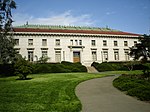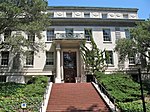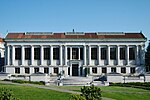Moffitt Library

Moffitt Library, designed by John Carl Warnecke in the late 1960s as a cutting-edge library for undergraduates, sits at the crossroads of the University of California, Berkeley. Named after James K. Moffitt, a regent of the University of California, the library has been a popular destination for students for over four decades. Campus and curriculum changes in the time since Moffitt Library opened have been a catalyst for considering new purposes for this highly trafficked space. Accommodating increased undergraduate enrollments, greater focus on problem-based and research-based learning, and demand for access to technology-rich spaces have all been taken into account as part of the re-imagination of this library. The University Library began re-envisioning Moffitt Library with the renovation of floors 4 and 5 in 2016, transforming them into a flexible, 24 hour environment for individual and group study. The renovated floors provide a variety of spaces including open casual seating, meeting rooms for brainstorming and group projects, and nooks and carrels for quiet study. Updates also included improvements to critical building systems, life-safety features, and have created a foundation for further renovations of the library. The Newspaper Display Wall is located outside the 3rd floor south entrance, where visitors can read the daily front page of various international newspapers.
Excerpt from the Wikipedia article Moffitt Library (License: CC BY-SA 3.0, Authors, Images).Moffitt Library
University Drive, Berkeley
Geographical coordinates (GPS) Address Website Nearby Places Show on map
Geographical coordinates (GPS)
| Latitude | Longitude |
|---|---|
| N 37.872486111111 ° | E -122.26077222222 ° |
Address
Moffitt Undergraduate Library
University Drive
94704 Berkeley
California, United States
Open on Google Maps






